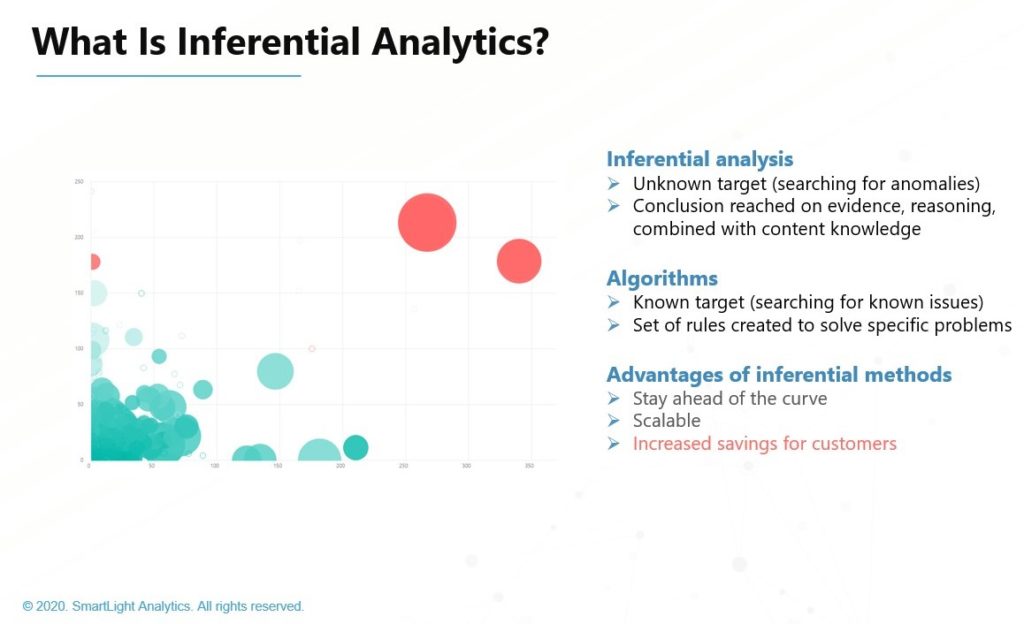What is inferential analytics? This analytic method is used by the SmartLight team to find fraud, waste, and abuse in employee healthcare claims. Simply put, it does not rely only upon algorithms, which are a set of rules created to solve specific problems. Instead, it looks beyond the expected “rules” to find outlier patterns of behavior.

Algorithms look for known issues and targets. For example, an algorithm might be set to look for a specific rule — all providers who bill two x-rays for every patient – which could possibly be an indicator of fraud or overbilling. However, that specific rule could be overlooking a more creative or different fraud scheme. In contrast, inferential analysis does not rely on rules but instead uses evidence, reasoning, and content knowledge to look for anomalies in the data. It models “normal behavior” such as the average spend per patient then compares all the data against that model.
When using algorithms as your primary tool, the downside is you are never ahead of the curve. As soon as a provider finds that claims are getting denied using one code, then the provider will switch those codes to something else. With inferential analytics, data analysts are not searching for a specific code but using statistics and probability to determine if an observed action differs from an expected action.
As an example, geospatial analysis used by SmartLight compares distance traveled for services such as lab processing. Analysts calculate a mathematical score that evaluates the actual distance traveled between a provider and a lab for routine lab services, compared to the expected distance. One claim reviewed had an expected distance of seven miles for lab work, and the actual distance was two miles from the provider. The claim was then compared to another claim where the expected distance for lab work was 10 miles, but the actual distance was 2,976 miles. This drastically different mileage might indicate a “Pass-through Lab Scheme” and at the very least requires further investigation.
Inferential analytics allows employers to see beyond the surface of their employee healthcare claims and prevent wasteful spending.
